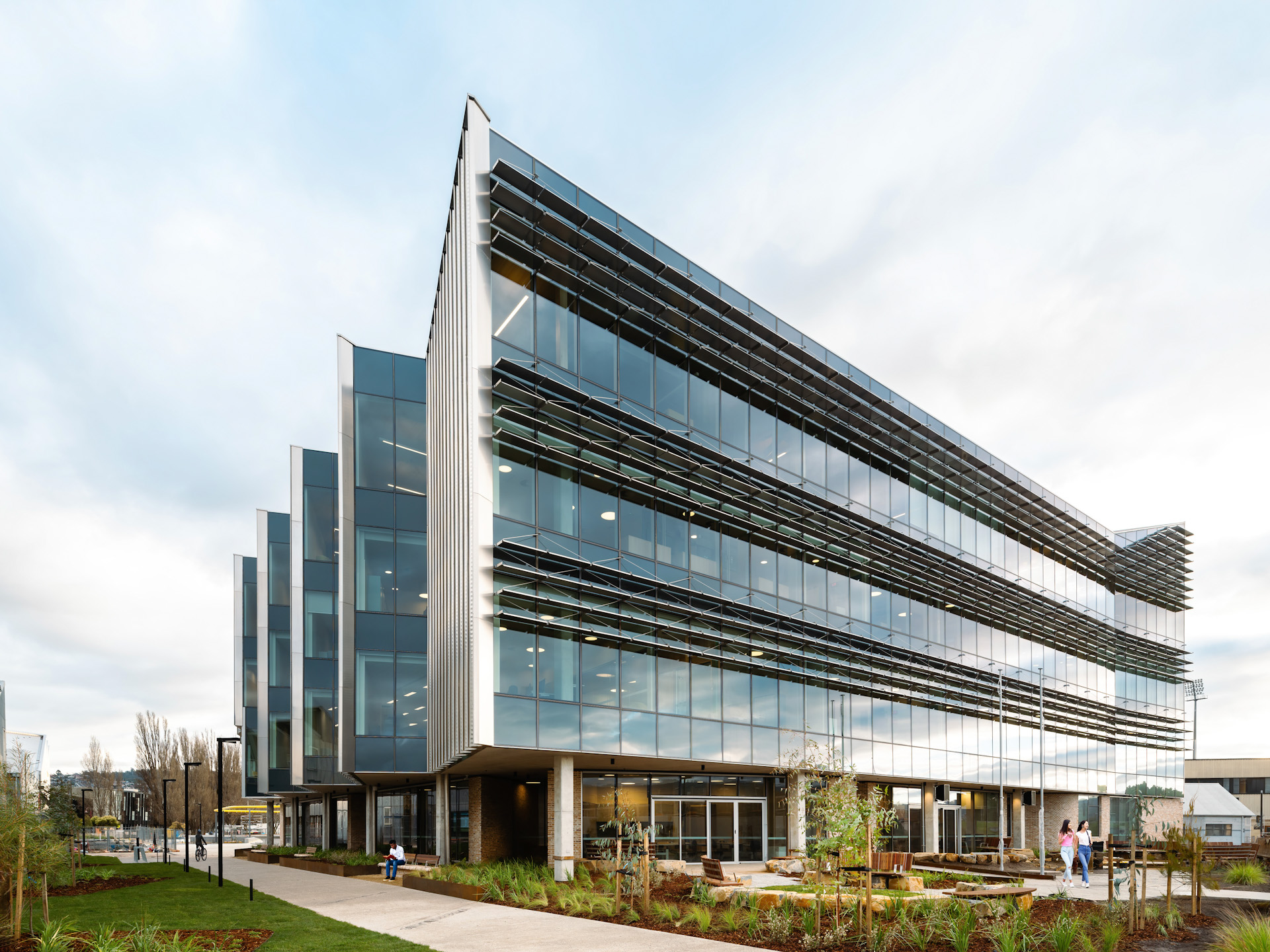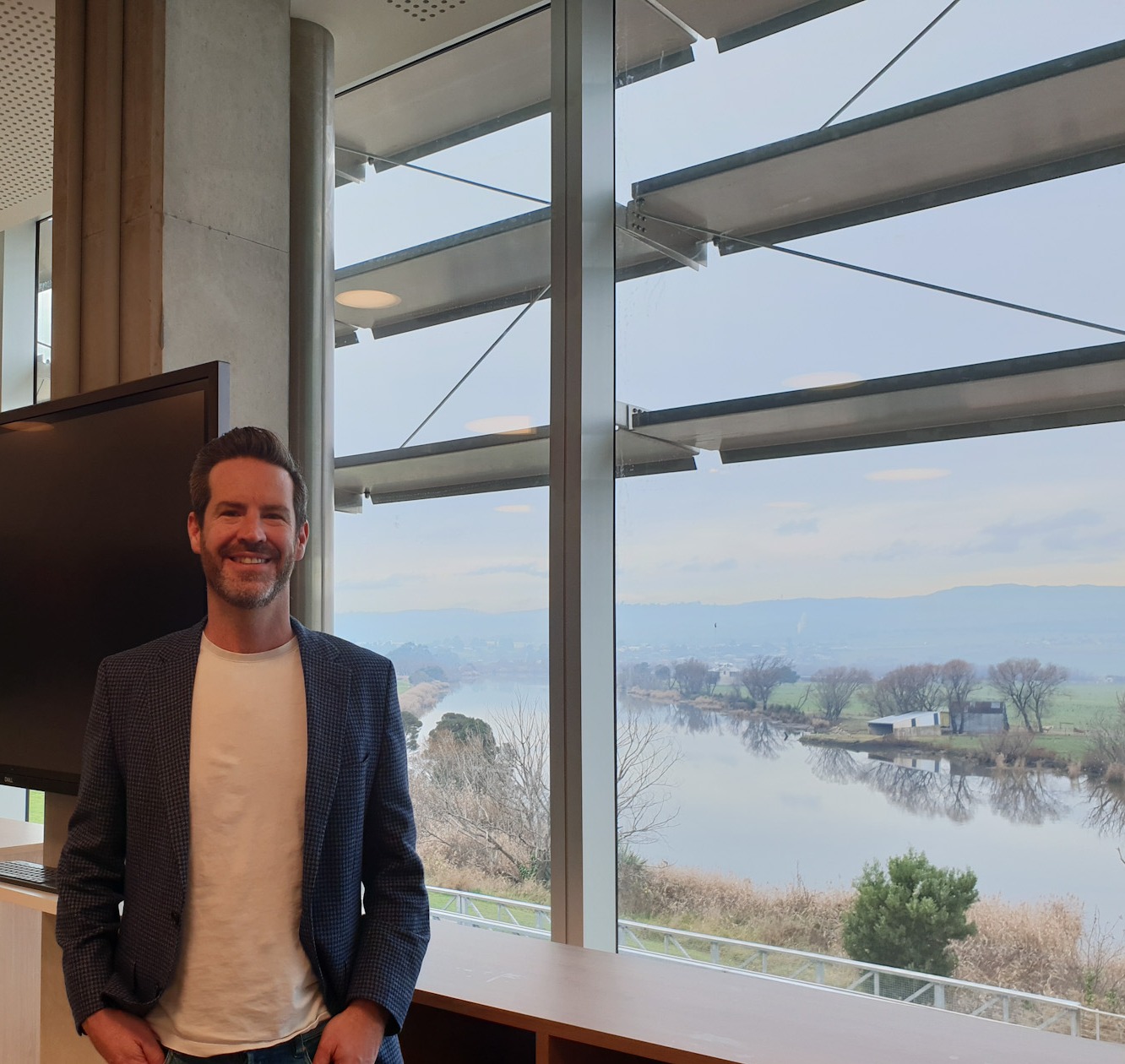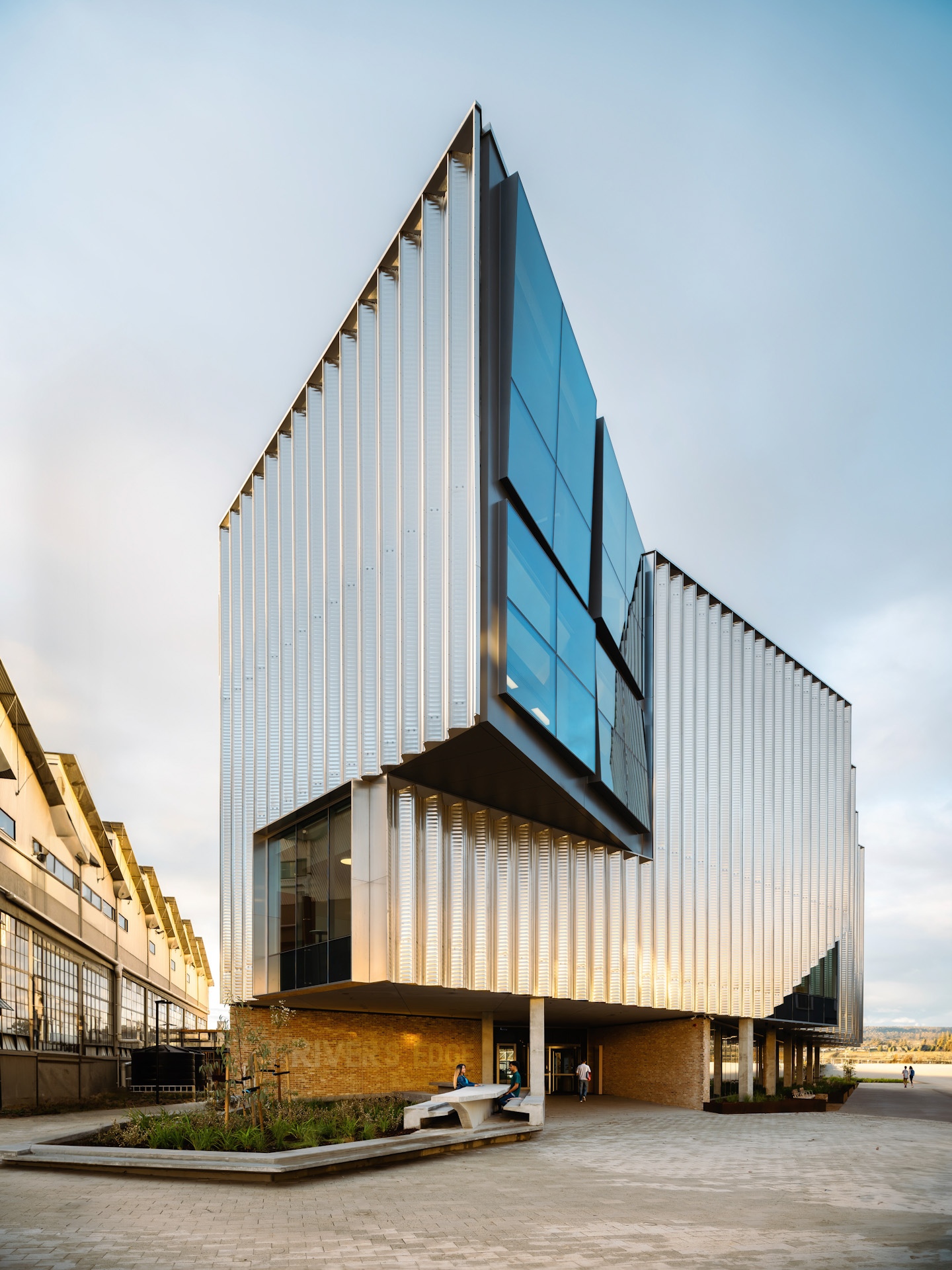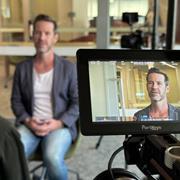River’s Edge has opened in Inveresk, transforming the experience of studying and working at the University in Launceston. Members of the public, too, are invited to use the quintessentially Launceston building which, through outstanding architecture, invites aspiration and possibility.
In its use of earthy materials and forms, and the heritage setting of The Inveresk Railyards, River’s Edge speaks to the industrial, working-class history that was such a foundation for this city. Framing views of the meandering Lakekeler/North Esk River, and fringed by the Riawunna Garden, River’s Edge also acknowledges the deep history and natural beauty of the region. In its generously sculpted spaces and fine craftsmanship, it seeks to make a positive difference to the educational and civic life of Launceston.
River’s Edge offers the best facilities available, providing students, wherever they come from in Tasmania or elsewhere, with an education as good as anywhere in the world. The legacy will be in these students’ changed lives, their expanded opportunities, and their ability to contribute. The building has been purpose-built for modern teaching to encourage interactive learning.
When students come onto campus, they are taught in a smaller group setting and can focus on hands-on, discussion or practical-based learning in a mix of small (12 person) to larger (50 person) collaborative teaching spaces.
More broadly, the design of the emerging Inveresk precinct encourages people to connect and collaborate (or find a quiet space to focus if they need to), so you won’t see buildings labelled for individual Schools. The result is a precinct that is easy to navigate, inclusive and welcoming to all, enabling students to get to know others from outside their area of study, enriching their university life.
But the vision extends further than this. Inveresk is a shared and valued place for the entire community, where education, sport, creativity and history all meet. This makes it a vibrant location for local industry and business leaders to meet and connect with students and staff, building future partnerships and career connections. University buildings are open and welcoming to the public, who are encouraged to visit and participate in what’s happening around the campus, whether it’s borrowing a book from the Inveresk Library or getting involved in the Community Garden.


So, what’s it like to move in and start working and teaching from the new River’s Edge facilities?
Dr Nicholas Hookway (BA Hons 2004, PhD 2011), Senior Lecturer in Sociology in the School of Social Sciences, shares his experiences so far.

How have you and other staff found the new building; how was the move and leaving Newnham?
I’m really enjoying the new spaces and being at Inveresk; it’s a place people want to be. From my honours year to teaching thousands of students over the years, I have many fond memories of Newnham so there was a sadness about leaving, but overwhelmingly my colleagues and I are excited about being at River’s Edge – a building that is not only beautiful but fit for how we now work and teach.
The new campus has created a sense of wanting to go to work. It helps build connections. My research area is around social connection and how we create communities in contemporary life. This is being achieved here, through good design and intentional creation of spaces.
There have of course been anxieties and uncertainties about the move, but we are figuring out new ways to work and be together and are finding our new normal. I’m already chatting and interacting with new people across the College of Arts Law and Education and that is really energising and positive. We know we work better when we know each other on a personal level and have that sense of care and connection. It’s certainly a great reset after COVID, which intensified feelings of disconnection. If you design great spaces, people will want to be there.
What are you enjoying most about being at the new Inveresk campus, and how will the teaching and learning be experienced differently for our students?
It’s a place our staff and students can feel proud of, a place you want to bring members of the public to and have a coffee meeting in the local café.
The technology in the teaching rooms is state-of-the-art but easy to use; some office spaces are open plan but there are plenty of meeting spaces for quiet and focused work. I teach first-year sociology with a large cohort of 300 students, and I can’t wait to teach them here face-to-face and take advantage of the technology to find new ways to bring on-campus and off-campus students together.
From members of the public visiting the museum to people running the trails of nearby Heritage Forest, there is a feeling of civic connection and belonging at the new campus. The campus also provides students opportunities to reach outside their disciplinary boundaries and feel part of something bigger. Going to uni is a big marker in a person’s life and, particularly for young people, it can be a period of change and vulnerability, so forming new connections is important. The new buildings and Inveresk site will help foster this.
The connection to the city and the wider community is clear too. With buildings visible and publicly accessible, this provides new and exciting ways for our research and teaching to connect with business, community organisations and the wider public.
For example, I’m on the board for Headspace North so we could host meetings here, hold youth events and conduct research together.
Having university buildings embedded in the city and the community like this also helps demystify university. We know in Tassie there are lower levels of educational attainment. As a kid from the North-West, I was the first in my family to study at university and I felt like a fish out of water. If this is a space I regularly hang out at – whether it’s visiting the museum, playing basketball on the community courts or going to the footy – then university begins to feel like a place where I belong and fit. That’s really important and something I’m really excited to be part of.

Written by Chelsea Wingrove for Alumni Magazine Issue 54, 2023.
Connect with our alumni community to discover more.
Top of page: New teaching spaces overlooking the North Esk



